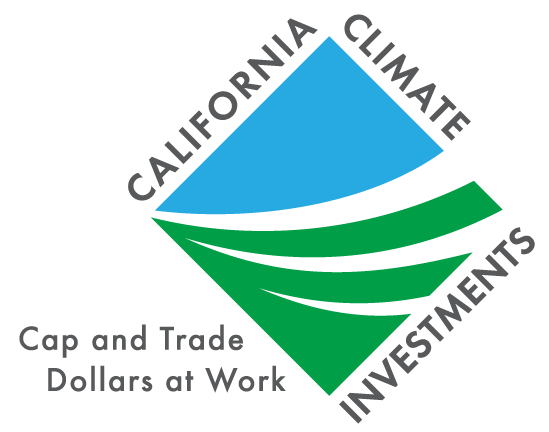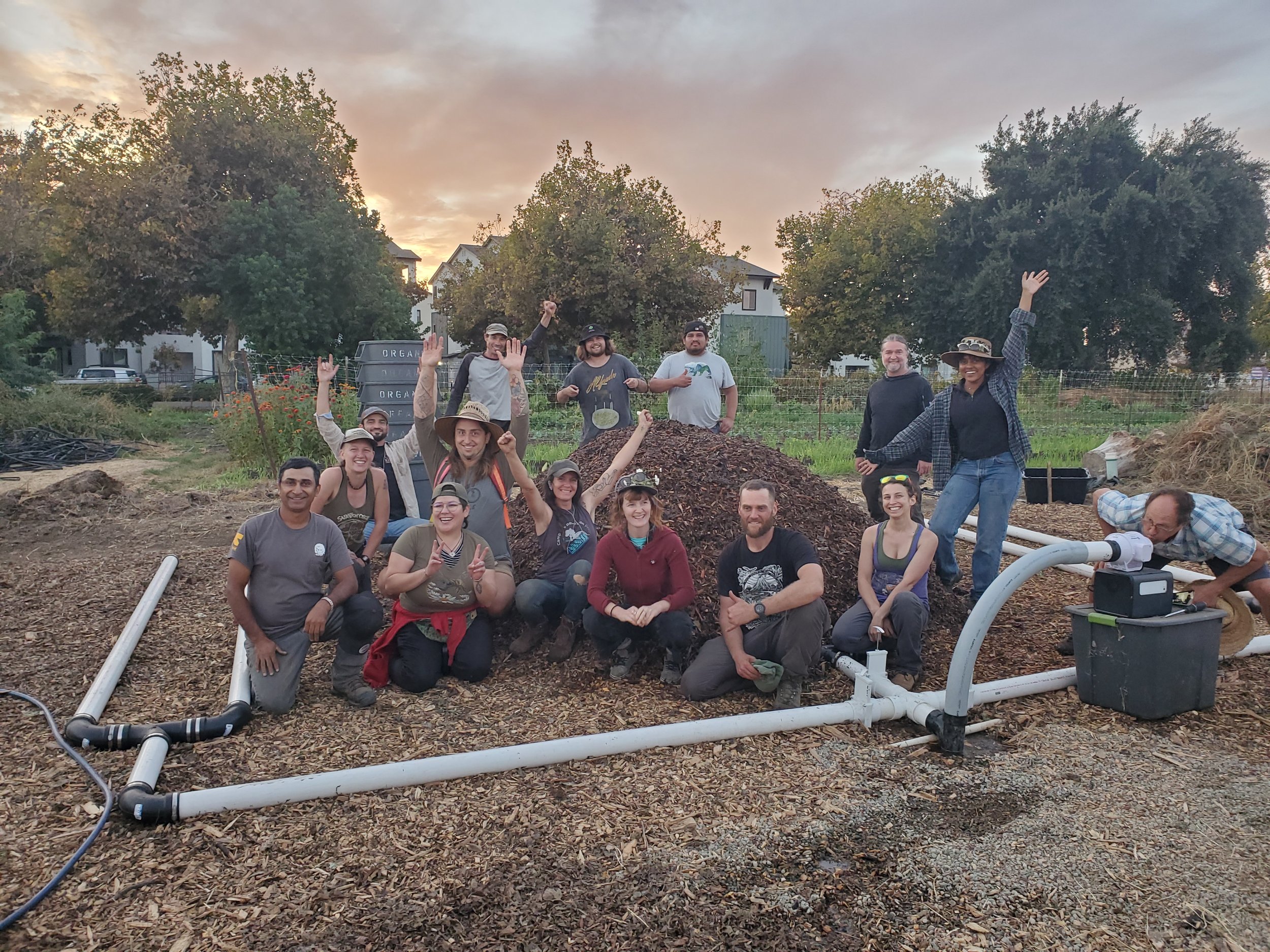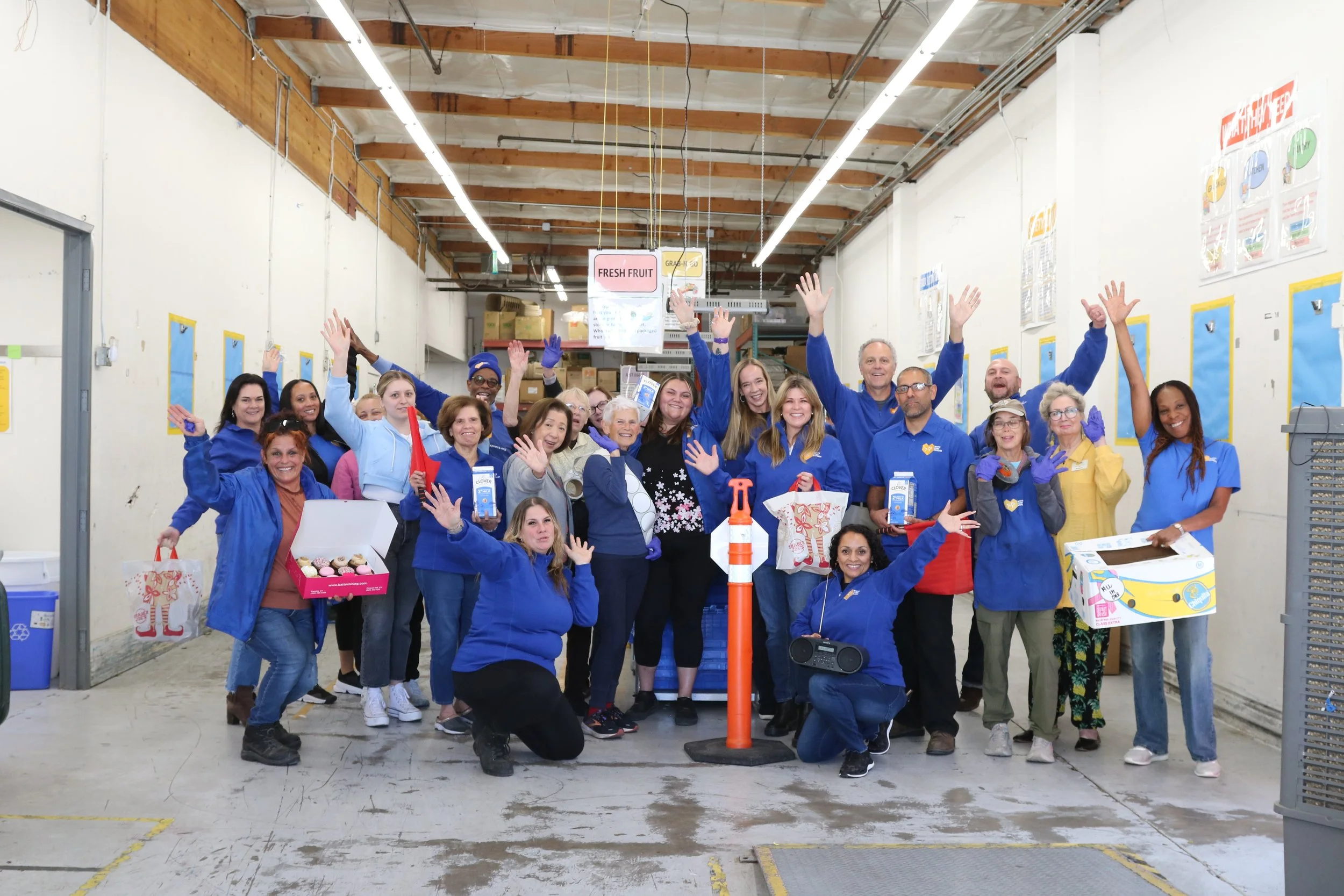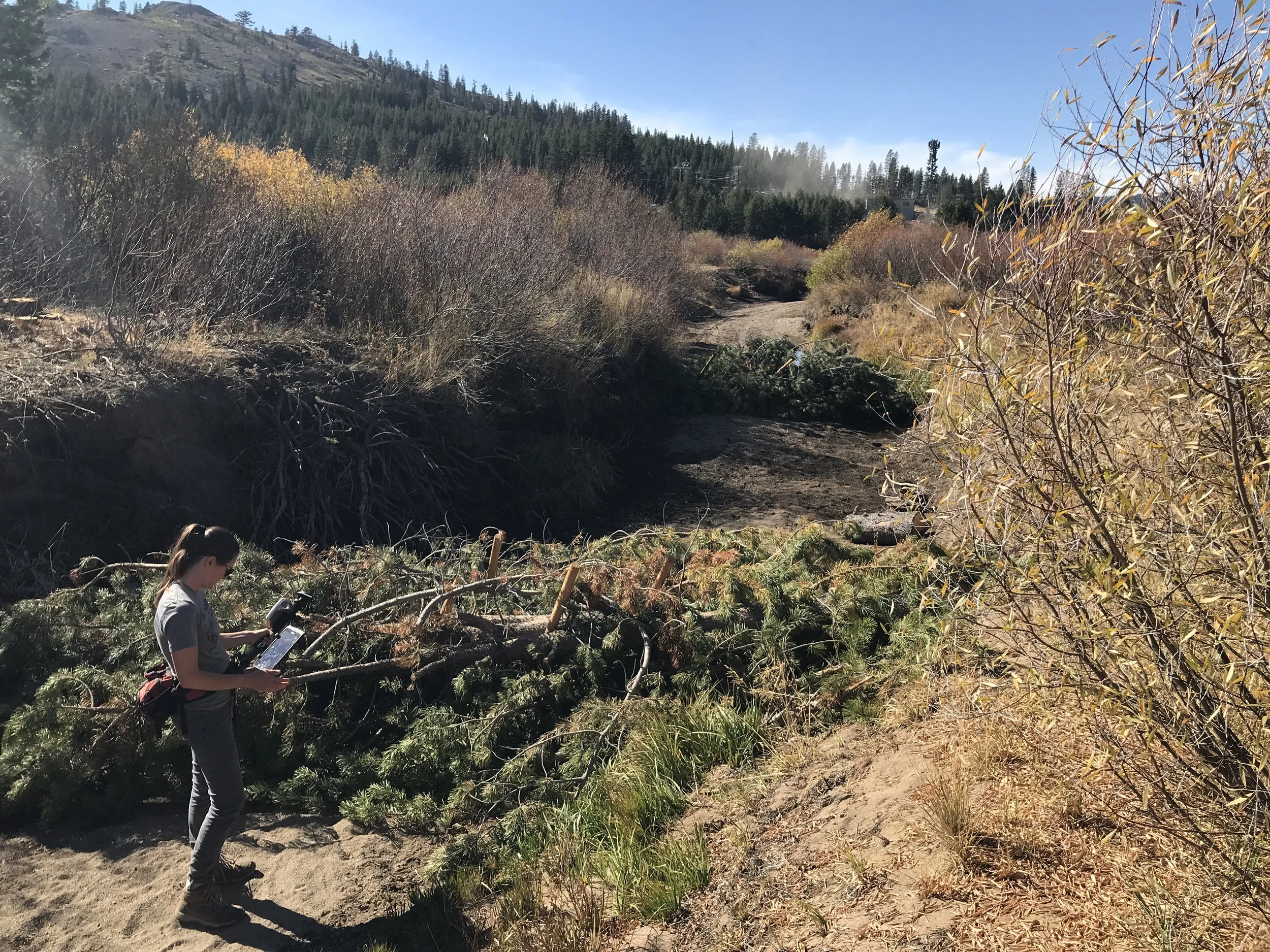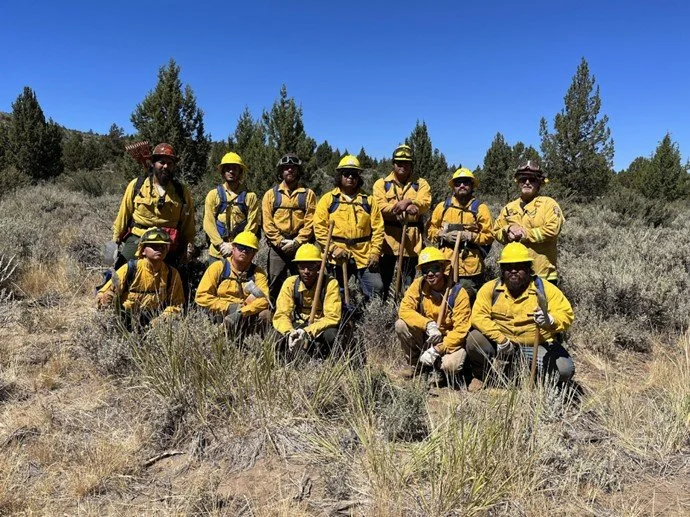California Department of Resources Recycling and Recovery’s (CalRecycle) Community Composting for Green Spaces Grant Program is funding community composting at hundreds of sites across California. In the first cycle of funding, the grant program awarded $1.5 million to the People, Food, and Land Foundation, which supported community composting at 117 sites throughout California, planted 488 trees, created 4,418 cubic yards of compost, and reduced emissions by 2,508 MTCO2e of GHG emissions. An additional $4.2 million was awarded to the California Alliance for Community Composting and LA Compost in the second cycle of the program. Through the establishment or expansion of community composting sites, communities receive benefits such as part time jobs and training on composting practices, fresh produce from adjacent gardens, training on farming practices, an increase in shade from tree planting, and the development of green spaces.
Improving Sacramento Valley Soil Health with Winter Cover Crop Species
In 2020, Sarah Light, agronomy advisor at the University of California Cooperative Extension, partnered with the Colusa County Resource Conservation District, Davis Ranch, Richter Ag, and the United States Department of Agriculture Natural Resource Conservation Service to apply for a CDFA Healthy Soils Program Demonstration Grant. The team received $99,832 of grant funding to conduct a demonstration project on cover crops on two fields in the Sacramento Valley from fall 2020 to spring 2024.
Hoopa Valley Tribe Brings Fire Back to the Land
In the Hoopa Valley Tribe’s homelands, California Climate Investments funding is helping the Hoopa Valley Tribe re‑introduce fire to an important oak woodland ecosystem. The work is supported by a $1.36 million grant from CAL FIRE’s Forest Health Program. The eastern side of the Hoopa Valley, on the current Hoopa Valley Reservation in what is known today as Humboldt County, has historically been home to extensive oak woodlands. Fire has always played an important role on this landscape—the people burned the hillsides for generations to maintain the oak trees and promote growth of other culturally important plants.
Ambitious Partnership Delivering the Next Generation of Old-Growth Redwood Forests
Old‑growth redwood forests store more above‑ground carbon than any other forest type on Earth. Unfortunately, only 5% of old‑growth redwood forests survived extensive colonial logging in the 19th and 20th Centuries. Now, thanks in part to California Climate Investments funding awarded through CAL FIRE’s Forest Health Program, a partnership is working to establish the old‑growth forests of the future on California’s northern coast.
White Pony Express: Food Recovery for All
CalRecycle’s Food Waste Prevention and Rescue Grant Program funds projects that lower overall greenhouse gas emissions in California through food waste prevention and rescue projects, which reduce the amount of food disposed in landfills. Receiving multiple grants from the program since fiscal year 2016-17, White Pony Express: Food Recovery for All is a food waste rescue project operating out of Pleasant Hill, California. It has received a total of $701,530 from California Climate Investments, as well as additional funding from CalRecycle’s Edible Food Recovery Grant Program.
Protection of Shasta County Ranch Provides Agricultural, Educational, Wildlife, and Climate Resiliency Benefits
Ross Ranch is an 854-acre working ranch that lies within the City of Redding’s sphere of influence, or the identified expansion area for the city. The property is leased to cattle ranchers and beekeepers, with 30 acres used by neighboring Shasta College for cattle grazing. In 2018, the California Strategic Growth Council awarded the Shasta Land Trust an approximately $5.6 million Sustainable Agricultural Lands Conservation Program (SALC) grant to acquire an agricultural conservation easement that permanently protects Ross Ranch from development.
Kick-Starting Zero-emission Fleets and Expanding Transit on California’s North Coast
With funding from the California State Transportation Agency’s Transit and Intercity Rail Capital Program, the Humboldt Transit Authority will procure eleven fuel cell electric buses for use throughout the North Coast and build the northern-most hydrogen fueling station for public and bus use in California. This project will also create a new intercity transit service to connect local riders from Eureka to Ukiah and points south, including the San Francisco Bay Area, with fuel cell electric buses.
Improving Forest Health in the Yurok Community Forest and Salmon Sanctuary
Van Norden Meadow Restoration Project
California Department of Fish and Wildlife
With $3.9 million in support from the Wetlands and Watershed Restoration Program, the South Yuba River Citizens League together with the Washoe Tribe and project partners are restoring 485 acres of the high-elevation meadow habitat in Placer and Nevada Counties. Project partners include the Tahoe National Forest/U.S. Forest Service (USFS), Wildlife Conservation Board, Truckee Donner Land Trust, UC Davis Center for the Watershed Sciences, Point Blue Conservation Science, University of Nevada Reno, and Nevada County.
Sierra Institute High Road to Tribal Forest Restoration and Stewardship
California Workforce Development Board
The High Road to Tribal Forest Restoration and Stewardship project provides foundational training and skill building tied directly to work experience in forest health and landscape restoration. Through a partnership between Tribes, nonprofits, and regional employers, the project is working to increase employment opportunities and build capacity for Tribal Forest restoration crews. The project has formally engaged with fourteen Tribes, with training participants from over twenty Tribes.
Landscape-Scale Fuels Reduction and Forest Health in the Western Klamath Region
California Department of Forestry and Fire Protection
A $5 million CAL FIRE Forest Health Program grant is supporting the Western Klamath Restoration Partnership in their efforts to restore fire resilience at the landscape scale along the Klamath River. This project is part of a larger effort by the Western Klamath Restoration Partnership to improve forest health and resilience across a 1.2 million acre planning area that includes much of the Karuk Tribe’s ancestral homelands.
The Ocean Ranch Restoration Project
California Department of Fish and Wildlife
The California State Coastal Conservancy is restoring wetlands at Ocean Ranch along the Eel River with support from a $2 million grant from the California Department of Fish and Wildlife’s Wetlands Restoration Program. The Eel River was once one of the Pacific Coast’s greatest producers of salmon and steelhead. Over the years, extensive human activities have reduced the Eel River Delta. As the estuary shrank, so did populations of salmon and other native species, and carbon sequestration rates. At the same time, non-native species proliferated.
Mountain Meadow Restoration Sequesters Carbon and Builds Resilience
Supporting Ecosystem, Community, and Cultural Resilience at Clover Valley Ranch
With help from a $680,974 grant from California Climate Investments through the Wetlands & Watershed Restoration Program, the Sierra Fund and project partners are carrying out multi‑benefit restoration efforts at the 2,655‑acre Clover Valley Ranch. Initiated in 2017, this project will sequester nearly 188,000 metric tons of carbon dioxide equivalent while halting stream incision; increasing biodiversity; and improving hydrologic function, flood reduction, sediment filtration and water quality. However, the goal of this project extends beyond of ecosystem function and carbon sequestration benefits; these activities will also support community and cultural resilience through the promotion of cultural skills and activities.
Reducing Fire Risk Through Hands-On Training Opportunities
The California Conservation Corps, a state department within the California Natural Resources Agency, uses funds from California Climate Investments to complete projects aimed at reducing greenhouse gas emissions across California. These funds target forest health projects, especially fuel load reduction where dead and dying trees, brush, and vegetation are removed to reduce wildfire intensity and rate of spread. The McKay Community Forest Fuel Reduction project provided skilled labor to Humboldt County to minimize fire danger near communities on the southeastern edge of the City of Eureka.
Tribal-Led Project Brings Affordable Housing and Sustainable Communities to Arcata
With the help of technical assistance providers funded by the California Strategic Growth Council’s California Climate Investments Technical Assistance program, Arcata 30th Street Commons became the first tribal led project funded by California Climate Investments through the Affordable Housing and Sustainable Communities program. The project, proposed by the Yurok Indian Housing Authority, earned a $11.4 million award and exemplifies how a strong vision, combined with partnership, technical assistance, and investment can help transform an under resourced community.
Ukiah Students Breathe Easier Thanks to New Zero-Emission Buses
North Coast Resource Partnership Plans for Forest, Watershed, and Community Health
The North Coast Resource Partnership is a unique coalition of North Coast Tribes and seven counties that represent the North Coast and Klamath/Interior Coast Ranges ecological regions, both of which are important carbon storage areas in California. To help protect the health of forests in this territory, the North Coast Resource Partnership is using $4,037,500 of California Climate Investments funding through the Regional Forest and Fire Capacity Program to develop a regional priority plan that will generate implementation‑ready projects and provide funding for demonstration projects.
Alternative Manure Management Approaches in Humboldt and Del Norte Counties
Governor's Priority Project Reduces Wildfire Risk in the Ukiah Valley
The Ukiah Emergency Fuels Reduction Project is performing vegetation management activities along ridgetops in strategic locations for firefighting and protecting critical infrastructure. The project built 14 miles of shaded fuel breaks at the edges of densely populated housing in Ukiah and the forested mountains that surround the Ukiah Valley.
